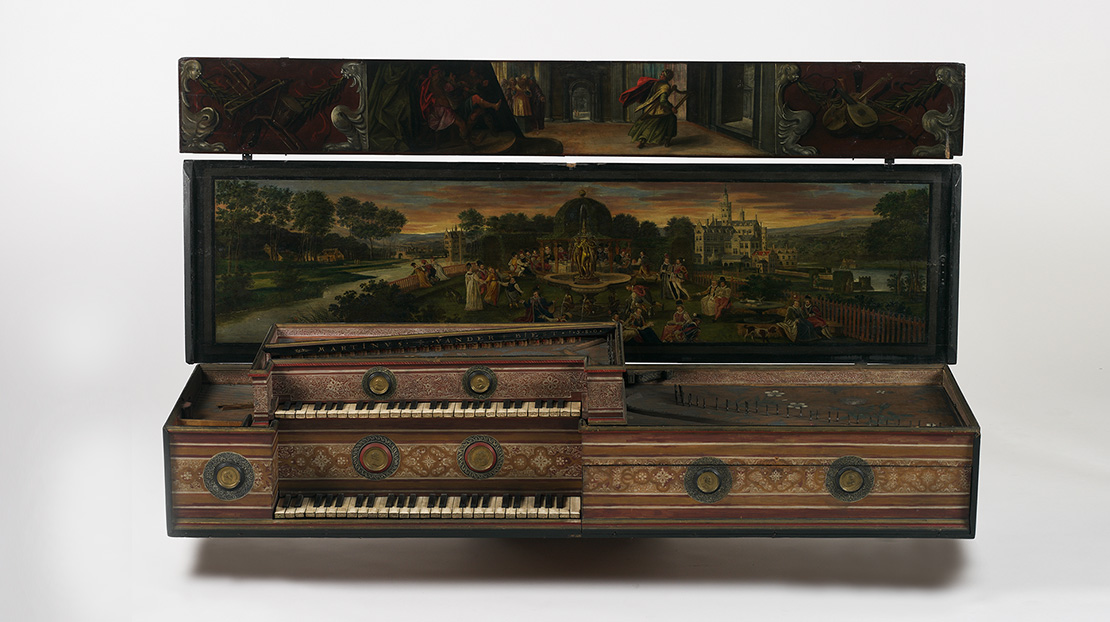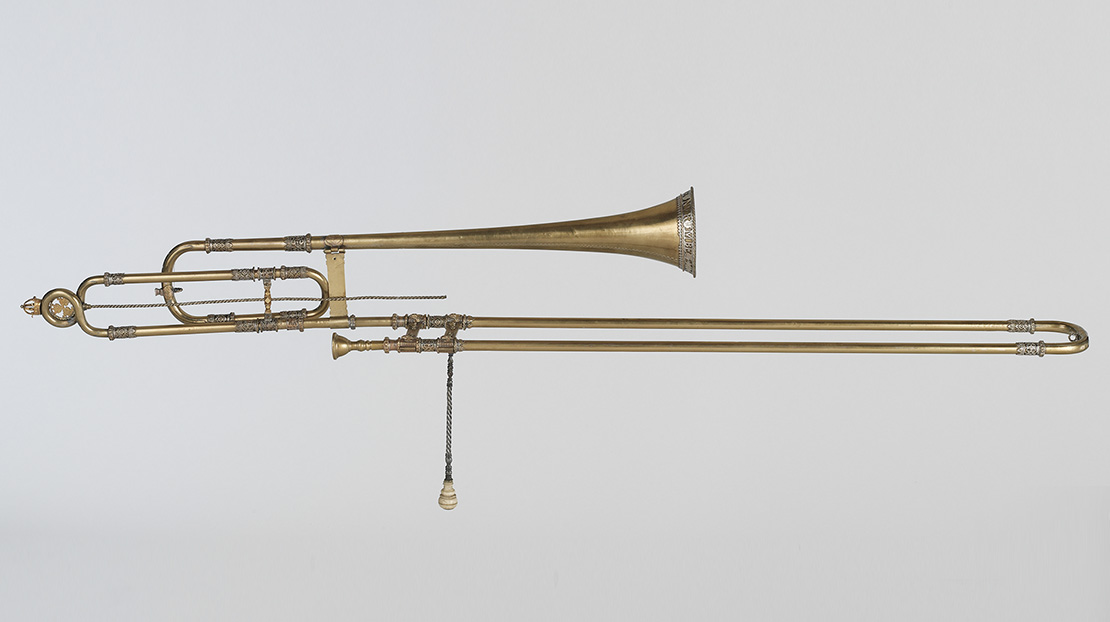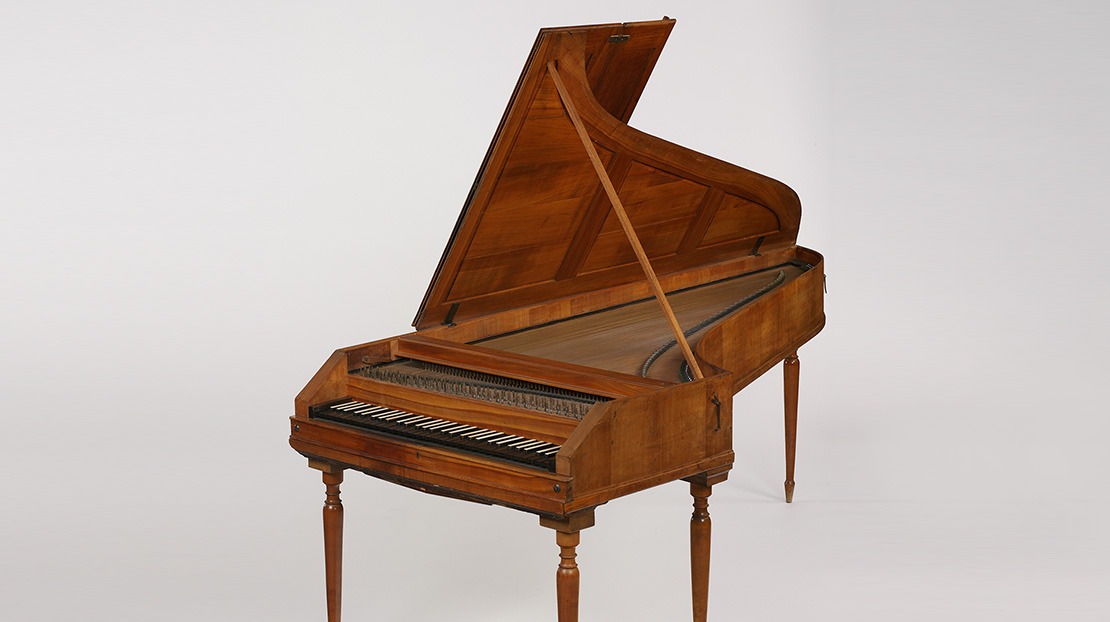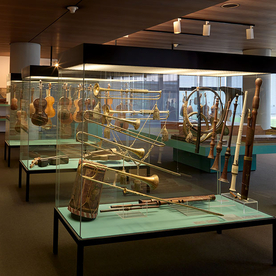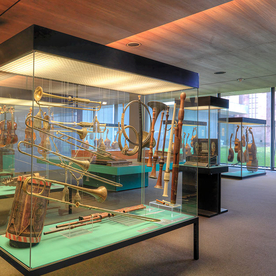Musical instruments (closed until 2030)
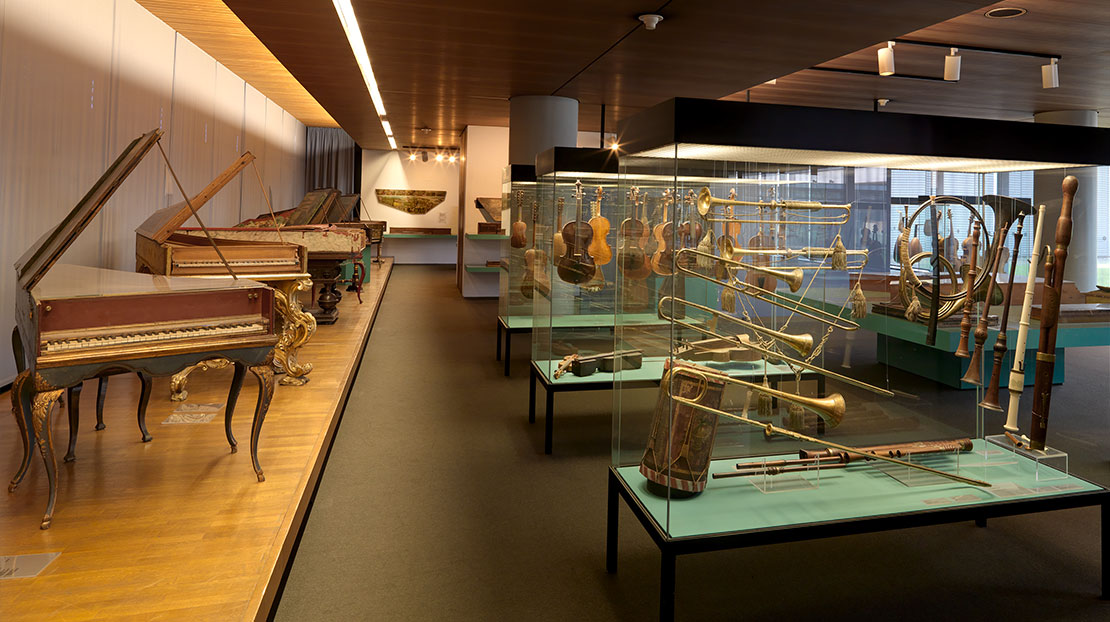
With around 500 objects, the permanent exhibition provides a chronological overview of the musical instruments of European art music from the 16th through to the 20th century. The exhibits accentuate contemporary trends such as instrument families in the 16th and early 17th century, ensemble relationships in the 18th century and technical developments and curiosities of the 19th century. The workshop of a clarinet-maker provides an insight into the craft techniques of the early 20th century. Various display cases focus on themes in musical instrument construction in the Free Imperial City of Nuremberg, which was renowned across Europe, for example lute construction or the Widhalm family, known for its exquisite stringed instruments and the Denners, appraised as the "Stradivaris" of woodwind instrument making and inventors of the clarinet. Phenomena of greater longevity, such as Nuremberg brass instrument making, thread through the entire exhibit room like leitmotivs.
The free standing keyboard instrument exhibits from one of the most important collections in the world are a particular attraction. Smaller instruments such as square pianos and clavichords are positioned on individual raised platforms, while the harpsichords and fortepianos form an impressive sequence, from the double virginal of the 16th century, one of the first German fortepianos and an instrument played by Chopin through to the first grand piano with computer connection. A further focal point is the collection of seven fortepianos (three alone from Anton Walter, from whom Mozart purchased his piano), which from 2002 to 2005 were used to record Mozart's complete piano sonatas.
Examples of objects
Exhibition rooms

Information and Services
Plan Your Visit
Opening Times
Location and Approach
GNM Museum Shop
FAQ
Library
Branches
Contact

